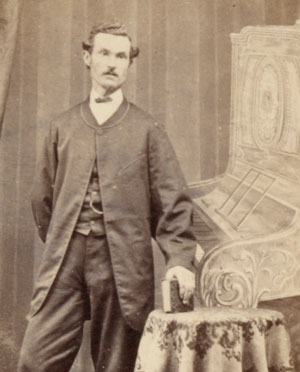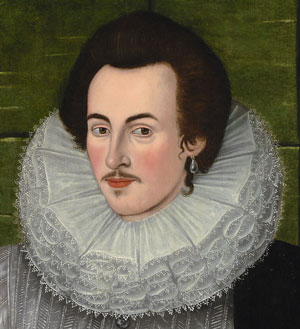BY AODHÁN CREALEY
JANUARY

15/1872
John King (33), soldier and the only survivor of the first successful crossing of the Australian continent from south to north, died. Born in Moy, Co. Tyrone, he was an assistant on the Great Northern Exploration Expedition—popularly known as the Burke and Willis expedition—that was organised by a group of Australian businessmen under the command of County Galway-born Robert O’Hara Burke to explore the Australian interior and find the continent’s northern limits. Setting out from Melbourne in August 1860, the party of nineteen, complete with horses, camels and wagons, made rapid progress to reach Cooper’s Creek, the last European settlement on their route, in November that year. Having left a depot there with most of the expedition’s men and supplies, Burke, along with his second-in-command William Willis, Charles Gray and King, made a 750-mile dash to the northern coast, arriving in the swamps of the Gulf of Carpentaria in February 1861. Misfortune, however, stalked their return journey. Contending with constant tropical rain and low on supplies, Gray died a month later. Then, in mid-April, when they finally reached Cooper’s Creek, they found it deserted. It transpired that, after waiting for four months, the remainder of the party had abandoned the depot that very same day, leaving only a meagre store of provisions. The three struggled on but only King survived. He was cared for by aborigines and was rescued in September 1861. Whereas the bodies of Burke and Willis were recovered and accorded state funerals and a bronze memorial was erected in Melbourne in their honour, King was rewarded with a gold watch and a modest pension. He retired to relative obscurity and married a cousin, but never recovered from his experience. He died from tuberculosis.
01/2019
Abortion services commenced in Ireland under the terms of the Health (Regulation of Termination of Pregnancy) Act (2018).
01/1974
The Northern Ireland power-sharing Executive took up office.
03/1984
Michael Mills, former political correspondent of the Irish Press, took up office as Ireland’s first Ombudsman.
04/1974
On his third day as Northern Ireland’s Chief Executive, Brian Faulkner was forced to resign as leader of the Official Unionist Party when the party rejected the establishment of a Council of Ireland under the terms of the Sunningdale Agreement.
04/1999
The euro made its debut on European financial markets.
09/1984
Seán MacEntee (95), founding member of Fianna Fáil and minister in all Fianna Fáil governments between 1932 and 1965, died.
17/1964
The Campaign for Social Justice (CSJ) was founded in Dungannon, Co. Tyrone, by Patricia McCluskey and her husband Dr Conn McCluskey for ‘the purpose of bringing the light of publicity to bear on the discrimination which exists in our community against the Catholic section of that community representing more than one-third of the total population’.
21/1924
Vladimir Lenin (53), Russian revolutionary, died.
22/1974
The Northern Ireland Assembly met at Stormont. Proceedings were disrupted by anti-power-sharing loyalists, eighteen of whom were removed by police.
22/1924
James Ramsay MacDonald (Labour) became British prime minister in a minority government.
24/1974
Four members of the IRA, including Dr Rose Dugdale, made an unsuccessful attempt to bomb Strabane RUC barracks from a helicopter.
28/1874
Kathleen Lynn, doctor, suffragist and humanitarian, born in Cong, Co. Mayo, the daughter of a Church of Ireland rector.
30/1984
Luke Kelly (43), musician, one of Ireland’s greatest folk singers and founding member of The Dubliners (1962), died.
31/1984
Ann Lovett (15) died after giving birth to a boy at a grotto in Granard, Co. Longford.
FEBRUARY

28/1600
Lord Deputy Mountjoy landed in Ireland with a 12,000-strong army on a mission to subdue, once and for all, Hugh O’Neill, the earl of Tyrone. Charles Blount had little military experience but had studied military strategy over many years and was to conclude the Nine Years War (1594–1603) in favour of the Crown. First, he had Sir Henry Docwra drive a wedge between the territories of Tyrone and his main ally, Red Hugh O’Donnell. Then, after breaching Tyrone’s formidable defences along the Ulster border, he was almost undone by the arrival of 3,000 highly trained Spanish troops in support of Tyrone. But the ‘luck of the English’ prevailed, with Tyrone suffering defeat in the Battle of Kinsale (1601) similar to that of Bagnell at the Yellow Ford (1598). Finally, he endorsed, albeit reluctantly, Chichester’s scorched-earth policy to create famine, along with the indiscriminate slaughter of the native Irish, policies which over the following months led to the demise of Gaelic Ireland and ultimately the Flight of the Earls (1607). Unlike Cromwell, that other bête noir of Irish folk memory who landed on these shores a few decades later, Mountjoy is commemorated in two place-names. The village of Mountjoy on the western shore of Lough Neagh is named after the nearby Mountjoy Castle, built on his orders (1602), the ruins of which still stand nearby. The village of Charlemont on the east bank of the Blackwater River—the ‘Great River’, as they called it then—on the Armagh/Tyrone border some 8km from Dungannon gets its name from the fort he had built there (1602), the name being a combination of ‘Charles’ and the ‘mount’ element of Mountjoy.
05/1934
Dublin Corporation debated a letter from the Gaelic League asking for a ban on the broadcast of jazz music on the grounds that it was contrary to the spirit of Christianity and nationality.
11/1984
F.W. Moody (77), historian and co-editor with F.X. Martin of The course of Irish history (1967), died.
12/1999
Following his impeachment by the US Senate, President Bill Clinton was acquitted on all charges.
23/1934
The Fianna Fáil government introduced the Wearing of Uniform (Restriction) Bill, which was soon dubbed the ‘Blueshirts Bill’. Three days later some 300 pupils from CBS schools in Thurles, Co. Tipperary, went on strike in protest against the wearing of blue shirts by a number of their classmates and paraded through the town singing Amhrán na bhFiann.
20/1914
The Fethard-on-Sea, Co. Wexford, lifeboat Helen Blake capsized while assisting the schooner Mexico off the Keeragh Islands. Nine of the fourteen-man crew were drowned.
20/1954
Henry Harrison (86), politician and writer, notably of Parnell vindicated: the lifting of the veil (1931), and the last surviving member of the party led by C.S. Parnell, died.
23/1874
Jerome Connor, internationally renowned sculptor, notably of Nuns of the Battlefield (1924) in Washington DC, born in Annascaul, Co. Kerry.
26/1914
The White Star Line’s HMHS Britannic, youngest sister of RMS Olympic and RMS Titanic, was launched by Harland and Wolff, Belfast.
21/1964
The Garda Training Centre in Templemore, Co. Tipperary, was officially opened by Charles J. Haughey, minister for justice, and Garda Commissioner Dan Costigan.
28/1974
In the UK general election Prime Minister Edward Heath’s Conservative Party lost 28 seats. Harold Wilson (Labour) was subsequently returned to office for the second time in a minority government. In Northern Ireland the United Ulster Unionist Council (UUUP), a coalition of anti-power-sharing loyalists, won eleven out of the twelve seats. Gerry Fitt was returned for West Belfast for the SDLP.
